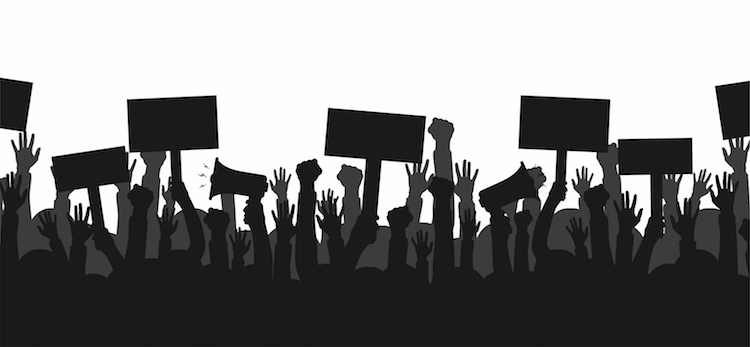Court security officer is shot and killed; courthouses damaged throughout US

Image from Shutterstock.com.
Two Federal Protective Service officers were shot outside the federal courthouse in Oakland, California, on Friday night. Only one survived, and he is in critical condition.
Although the motive for the shooting has not been identified, the incident happened as courthouses were damaged during protests over the weekend. The protests followed the death of George Floyd, who died after a Minneapolis police officer held Floyd down by kneeling on his neck. The officer, Derek Chauvin, has been charged with third-degree murder and second-degree manslaughter.
The slain officer, 53-year-old Dave Patrick Underwood, was killed by a shooter from a passing vehicle, according to an FBI press release.
The East Bay Times, Law360, the Los Angeles Times and the Press Democrat have coverage.
The officers worked under contract for the Department of Homeland Security’s Federal Protective Service at the Ronald V. Dellums Federal Building.
Ken Cuccinelli, acting deputy secretary of the Department of Homeland Security, called the incident “an act of domestic terrorism.”
In a statement, U.S. Attorney General William Barr said legitimate protests were being “hijacked by violent radical elements,” and the violence would be treated as acts of domestic terrorism. President Donald Trump tweeted Sunday that antifa, or anti-fascists—far-left-leaning militant groups that resist neo-Nazis and white supremacists at demonstrations and other events—would be designated as a terrorist organization, a move that some critics labeled unconstitutional, CNN reports.
There is “no legal authority for designating a domestic group” as a terrorist organization, said Hina Shamsi, director of the American Civil Liberties Union’s National Security Project.
The attack happened as several protests targeted courthouses. California appeals courts in Los Angeles and Sacramento were defaced, leading to announcements of several court closings in the state Monday, the Recorder reports. They included courts in Los Angeles and Santa Clara counties. Also, the clerk’s office of the California Supreme Court was closed Monday because of “continued civil unrest” and a San Francisco curfew.
Courts in other states also sustained damage. Windows were smashed, and fires were started in the historic Metro Nashville, Tennessee, courthouse Saturday night, leading to one arrest, the Tennessean reports.
In Texas, a courthouse in South Fort Worth was set on fire early Monday, NBCDFW reports.
In Birmingham, Alabama, windows at the Jefferson County Courthouse were broken, and a Thomas Jefferson statue outside the courthouse was damaged when someone set a fire at its base, according to AL.com.
In Indiana, the doors to the courthouse in Tippecanoe County were destroyed, a window was broken and graffiti was painted on its walls, the Lafayette Journal & Courier reports.
In Wake County, North Carolina, the courthouse and justice center were damaged in protests, ABC 11 reports.
In Michigan, the Kent County Courthouse was damaged, according to WZZM 13.
In Salt Lake City, the justice court is closed for repairs, according to a May 31 order. Video calendars will continue. When the building is cleared for public use, the lobby will open and in-person hearings will continue to the extent allowed by a COVID-19 order.
“We are confident that facilities will be able to replace the windows, restore the bricks, and clean the doors in short order,” the court’s order said. “But we also know that the social and psychological wounds exposed by George Floyd’s killing will take much longer to heal. We are painfully aware that municipal courts like ours have historically been situated on, or at least very near, the tip of systemic racism’s spear.”
To help facilitate healing, the court is taking several steps, including training judges and staff members on lessening implicit bias and working with Harvard University’s Access to Justice Lab to study strategies to lessen the impact of implicit bias on jurors.
Write a letter to the editor, share a story tip or update, or report an error.


